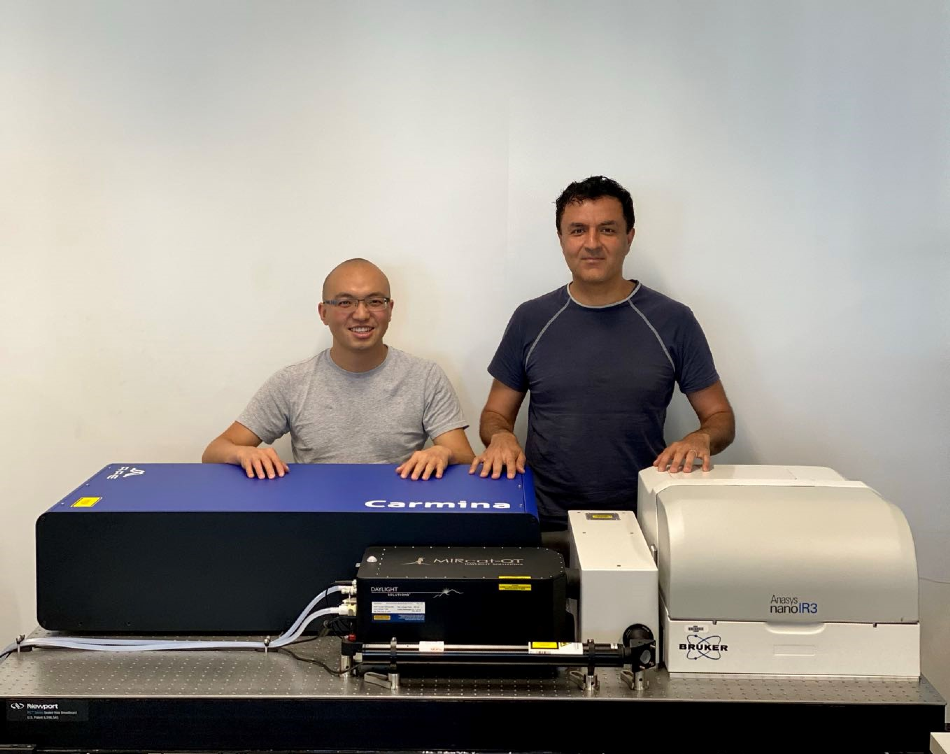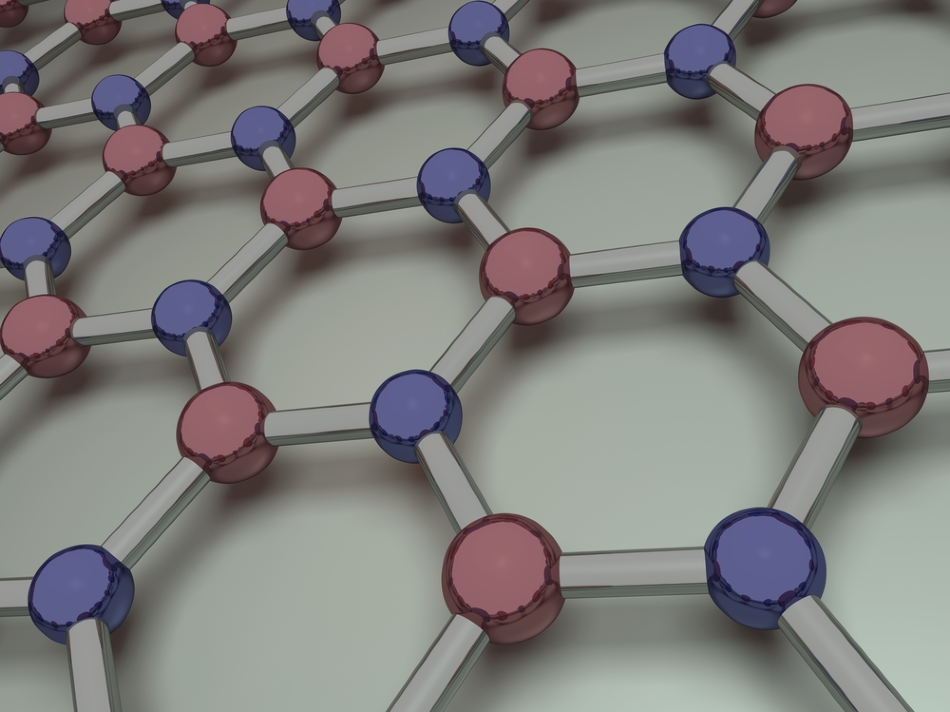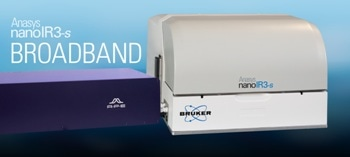
An interview with Professor Kourosh Kalantar-Zadeh, discussing the application of s-SNOM based nano-FTIR Spectroscopy to investigate unknown features in Phonon-polaritons.
Why is investigating phonon-polaritons in 2D materials an exciting area of research?
Phonon-polaritons arise from the interaction of free-space photons and the lattice vibration of polar crystals. By investigating phonon-polaritons in 2D materials, one can understand such fundamental light-matter interactions and explore the possibility of controlling light at small spatial dimensions, which can potentially lead to various applications, including super-resolution imaging, slow light, and other nano-polaritonic applications. So far, researchers have observed phonon-polaritons propagation in materials such as hexagonal boron nitride (hBN), silicon carbide (SiC), and α-molybdenum trioxide (α-MoO3). Many more materials should be explored and hopefully, a magic material with very long phonon-polariton propagation can be found to change the future of photonics.

Your latest research highlighted new findings. Could you describe in more detail about these findings?
Our latest research findings focus on the boundary-induced features of near-field amplitude spectra. We used a Bruker scattering-type scanning near-field optical microscope (s-SNOM) equipped with a phenomenally high-power infrared laser. By conducting Fourier transform on the collected near-field amplitude signal, one can obtain the near-field amplitude spectrum. We found that those amplitude spectra near the suspension boundary show auxiliary features that evolve with the distance from the boundary.
What advanced nanophotonic applications could these conclusions help enable?
Our research findings could help detect nanoscale boundaries and defects by using the nondestructive optical method. Such features define previously unseen vibrational characteristics of materials that can be used to create future extraordinary electronics and photonics devices.
Why did you choose to study hexagonal boron nitride in particular, compared to more commonly studied graphene?
We chose hBN as it is the most-widely studied polar crystal that can support the propagation of phonon-polaritons. In comparison, graphene is a semi-metal that supports plasmon-polaritons. Compared to plasmon-polaritons, phonon-polaritons exhibit high-density of states, strong confinement of electric field and relatively low-loss.

Image Credit:Shutterstock/ogwen
Why did you choose to use nanoscale FTIR Spectroscopy to study phonon-polariton? What is unique about the technology for 2D materials?
Previously, s-SNOM imaging was mainly used for directly imaging phonon-polariton propagation. However, thanks to the powerful infrared laser we have, for the first time, we were able to obtain high signal-to-noise near-field amplitude spectra. By analyzing those spectra, we realized that boundaries could introduce auxiliary features. The uniqueness of this technology is that it provides us with another perspective to investigate phonon-polaritons at the boundaries. In addition, this technology has a much broader wavenumber range of 670 to 4000 cm-1 compared to s-SNOM imaging wavenumber (normally 900 to 1800 cm-1).
What effect do boundaries have on polariton behaviors?
Boundaries can introduce auxiliary features in the near-field amplitude spectra. From the imaging perspective of view, they act as the source or reflector of phonon-polaritons. These features can be potentially used for understanding the propagation of electrons and photons in the boundaries that can help in creating low energy technologies such as those of topological insulators.
Why did you use the Bruker nanoIR3-s system in your research? What benefits does this instrument have?
Bruker nanoIR3-s system is superb in its capability to conduct both s-SNOM imaging and nanoscale FTIR spectroscopy at a very broad spectral range. The system is equipped with two state-of-art lasers, the quantum cascade laser for imaging and the nanoIR3-s Broadband Carmina laser for spectroscopy. In addition, it has the capability to mechanically detect the thermal expansion of nanomaterials under the illumination of infrared lasers.

What are the next steps in your research into polaritons and other 2D materials?
Next step, we plan to develop a model to explain the spectra features of phonon-polaritons. In the meantime, we will continue to explore other polar materials that support phonon-polaritons. We also intend to investigate the future use of boundary characterizations in developing advanced photonic and electronic devices.
Where can readers find more information?
Yang, J., et al. (2020). Boundary-Induced Auxiliary Features in Scattering-Type Near-Field Fourier Transform Infrared Spectroscopy. ACS Nano. DOI: 10.1021/acsnano.9b08895.
Learn more about the nanoIR3-s Broadband: https://www.bruker.com/products/surface-and-dimensional-analysis/nanoscale-infrared-spectrometers.html
About Professor Kourosh Kalantar-Zadeh
Kourosh Kalantar-Zadeh is a professor of chemical engineering at the University of New South Wales, Sydney, Australia. He is also a Laureate Fellow of the Australian Research Council. He has co-authored >425 research articles and reviews. Prof. Kalantar-Zadeh is a member of the editorial boards of several journals including Applied Materials Today, ACS Applied Nano Materials, ACS Sensors, Advanced Materials Technologies, Nano-Micro Letters and ACS Nano. He is internationally recognized for his work on sensors, two-dimensional materials and liquid metals. He was a recipient of the 2017 IEEE Sensor Council Achievement and 2018 ACS Advances in Measurement Science Lectureship Awards.
About Dr. Jiong Yang
Dr. Jiong Yang is a postdoctoral research associate under the supervision of Prof. Kourosh Kalantar-Zadeh at the University of New South Wales (UNSW) in Sydney, Australia. Before joining UNSW, he earned his PhD degree from the Australian National University. He has published over 30 highly cited peer-reviewed journal papers and book chapters on the characterization and device fabrication of two-dimensional semiconductors. His research interests include two-dimensional semiconductors, liquid metals, nano-fabrication, nano-photonics, and optoelectronic applications.
Disclaimer: The views expressed here are those of the interviewee and do not necessarily represent the views of AZoM.com Limited (T/A) AZoNetwork, the owner and operator of this website. This disclaimer forms part of the Terms and Conditions of use of this website.